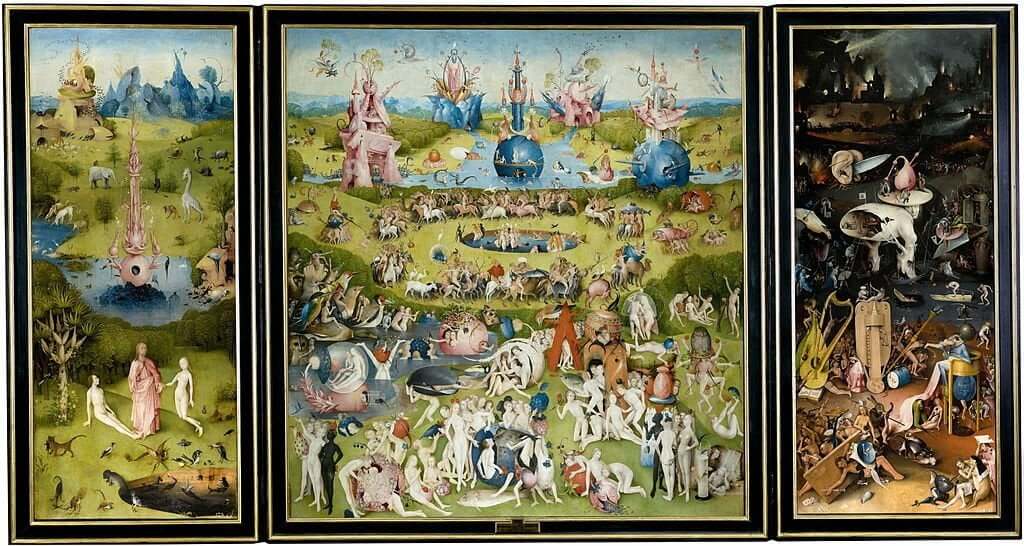The biography of Jerome Bosch tells a very simple story of the life of this exceptional artist, the history of the most orthodox art presents his works as religious art, but it is known that King Philip II, collector of everything that is hidden, had a great interest in owning his works. Something that, on the other hand, remains ironic.
The truth is that there is something in the life and work of this master of the arts that is difficult, very difficult to explain and, therefore, it seems that we do not fully understand this artist. All this halo of mystery around Bosch has given Rise countless rumors that his paintings were painted under the influence of altered states of consciousness, hidden symbolism, secret sororities, psychological disorders and even heresy. These charges at the time posed a dangerous challenge to established standards.
- They have tried to explain their work hundreds of times without much success.
- We can delve into the readings on the figure of Jerome Bosch.
- Learn from the detailed description of one of his works and.
- Even so.
- When contemplating them.
- There is always the feeling “there is something else here”.
Mystery has always fascinated the human being and the paintings and figures of the past have fueled our imagination, so we decided to discover what his life was like, how and how he painted it, we will also review some of the theories that try to explain the enigmatic and disconcerting life and work of this great master.
Its name was Jheronimus van Aken, but it was known as Hieronymus Bosch. The Dutch painter, born in 1450 into a family of artists, was the son and grandson of painters. Until half his life, Bosch produced his most famous works, complete with evocative symbols and fantastical elements featuring dream worlds full of hellish monsters.
Bosch was said to belong to a type of fraternity called “free-spirited brothers. “This fraternity was, in fact, a sectarian community born of the heresy of adamism, which did not believe in sin or redemption.
He opposed any established order and his ideas were marked as anarchic, this is only one of the many versions that his biography collects, others point out that the fraternity to which he belonged was that of ‘Nossa Senhora’ which, on the contrary, had values opposite to the previous version.
Bosch led a very comfortable life thanks to his marriage to the daughter of a prosperous merchant who enjoyed a good social position. As usual when we approach emblematic figures of the past, his biographical data, as well as his work, are a sea of conjecture. However, many experts in different fields have tried to clarify the facts over the past five hundred years.
His works have often been interpreted in the medieval tradition of exemplary characters about life, death and sin, but in recent decades, however, interpretations of his work that contradict classical design have paid off.
Several authors suggest that his work, in particular O Jardim das Delicias, his most reluctant painting to analyze, could have been painted under the influence of some kind of hallucinogen, that is, altered states of consciousness that immerse him in the same fantasy world. of semihuman figures he depicts on his canvases and which often represent real nightmares in a strangely dreamlike world.
On the occasion of the centenary of his death in 2016, a team of researchers has reclassified his work, which is distributed throughout several countries, in addition, some of the posts assigned to him have been removed and others have been included. , it appears that there are 21 tables that have not been the subject of controversy regarding their paternity, as he has generally not signed his paintings.
Among the paintings whose fatherhood does not seem doubtful, stand out: The Garden of Delights, The Final Judgment, The Hay Cart, The Extraction of the Stone of Madness, The Seven Deadly Sins, The Ship of fools and the triptych of the worship of the Magi. Some of these works are preserved in the Prado Museum, thanks to Philip II’s obsession with the Bosch collection of works.
While everything suggests that it is, the truth is that there is no unanimous opinion on this, Erich Peuckert, professor of German folklore, is one of the most prominent figures who supported this theory, following several studies at the University of Gottingen. , Peuckert and other researchers supported this idea as a possibility.
During these researches an experiment was conducted in which a recipe based on natural products, found in the ancient treatises of the fifteenth century, was used, the recipe in question is known as one of the ‘witch ointments’ of medieval times.
Volunteers in the study, subjected to the effects of this ointment, experienced a lot of drowsiness in which strange hallucinations occurred, during the sessions these volunteers saw images of exceptional sexual content, hellish creatures, monstrous character attacks and many elements that can be found in the paintings of Jerome Bosch.
On the other hand, there are other studies that bring us closer to possible mental disorders that, in some way, the artist has shaped throughout his work. Under the effects of psychotic disorders or archaic aromas, the truth is that Bosch’s work has something that penetrates beyond the senses. This occurs in such a way that it is not possible to explain whether the messages contained in his paintings come from? or they are aimed at the subconscious in an intentional way.
One way or another, we hope you have enjoyed reading Jerome Bosch’s biography, to this day you can appreciate his work, absorb his art and experience the different sensations that his works can provoke.

